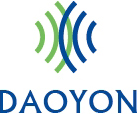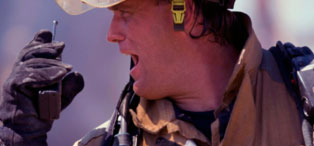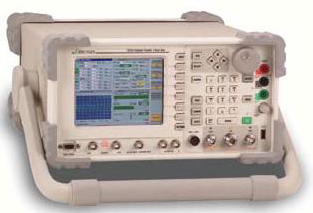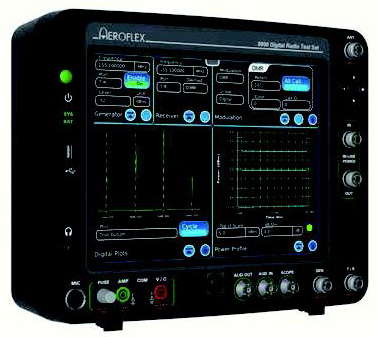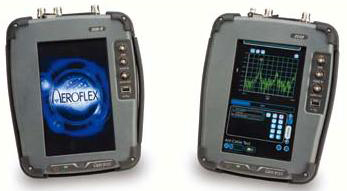8150
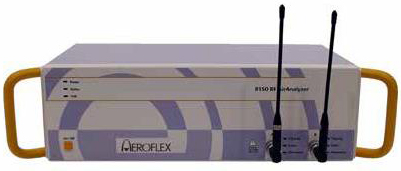
Ensuring Safe and Reliable Communication When You Need It Most
Mobile networks following the TETRA standard form a basis for successful operation in the police and emergency services, airports, railways and for many other professional users. These user groups demand reliable and safe network operation at best possible radio coverage.
The 8150 AirAnalyzer can be employed in all types of different situations:
- Interoperability testing between mobiles and base stations
- Quality analysis of TETRA network services, such as MCCH call loads and call statistics
- Investigate problems during installation or expansion of TETRA networks
- Locating carrier and interference problems
- Analyzing voice communication quality
- Verifying security features such as authentication and air interface encryption
- TETRA system coverage maps
These high requirements can be fulfilled with Aeroflex’s 8150 TETRA AirAnalyzer, a unique and versatile tool to continuously analyze and maintain a TETRA network.
The TETRA AirAnalyzer is supported by a software package for the following tasks:
- Protocol analysis using message sequence charts (MSC) to display in detail the complex flow of communication in the signaling protocol between TETRA radio and base station
- Quality of service analyzer to chart issues within a radio cell over a given time period, including statistical evaluation
- Voice decoder monitoring and recording the on-going voice communication in the network
- Measurement of channel and modulation parameters with the TETRA physical data analyzer
- GPS-assisted radio coverage measurements
- TETRA scanner to survey spectrum utilization
- Decoding of communication under static or dynamic air interface encryption
Fast Data Capture, Comprehensive Analysis
Two powerful and highly sensitive measurement receivers form the heart of the 8150 TETRA AirAnalyzer. These receivers pick up the bidirectional communication between TETRA mobile stations and a base station. All time slots in the downlink and uplink of a selectable channel are analyzed simultaneously.
The TETRA AirAnalyzer decodes the data received on the radio channel in real time and forwards them to a PC for further processing. Various PC applications can analyze the data under different aspects. The analysis can be performed either online or offline, using the data received and stored at a later date.
Packet data transmission can also be processed by the TETRA AirAnalyzer and are stored for further analysis with third-party applications like Wireshark® or other IP packet sniffers.
Suspect Faults in the Message Flow?
The TETRA MSC application visualizes the signalling messages received over the air interface in a clear and concise way. Thanks to the structured layout, users can easily identify which message is transmitted on what protocol layer. The messages are individually tagged with a time stamp and the relevant RF parameters, such as frame number, frequency offset and signal strength. Signalling messages not conforming to TETRA standard EN 300 392 are marked with a different color. With a click on the marked message, the application displays a detailed error description.
A number of filter functions eases fault tracing because the user can reduce the messages displayed to those which are of interest in the case at hand.
Analyzing Voice Communication and Voice Quality
The 8150 TETRA AirAnalyzer and its associated PC software can output and store voice data received over the air interface, enabling users to evaluate the voice quality and to observe communications over the network. With the voice decoder function, users can monitor speech on two time slots and record it in Wave sound format for later analysis. The direction and time slot can be selected on a straight forward user interface.
Finding TETRA Carrier Problems
The TETRA scanner searches for TETRA carriers in a user-defined frequency range. In addition to the available TETRA channels, the broadcast parameters are displayed for each carrier with a main control channel. This feature helps to easily identify network configuration problems. The channels available can be monitored because the usage of time slots for traffic (TCH) is displayed and permanently updated. Associated measurement values, such as received signal strength or frequency error, are shown in a diagram. This tool offers an easy way to check the results of network planning in real life, so that the network can be optimized if necessary. The current network status in regard to quality and quantity can be evaluated, so the tool can be used to find the best possible utilization of resources. With a GPS device connected to the computer, the 8150 TETRA AirAnalyzer can even be turned into a full featured drive test receiver with real-time storage of the current position.
Extending the Range of Possibilities With Options TETRA QoS Analyzer
The optional 8165 TETRA QoS Analyzer application provides an easy way to evaluate the quality of service; the results of the QoS parameters are displayed graphically for easier interpretation. In the TETRA AirAnalyzer, quality of service means more than just radio coverage: To ensure that the TETRA network for safety-critical operations can perform the required service, more data is of importance. Call setup time, number of queued calls and associated wait time, call priorities and cell load are important parameters to describe the network quality. Emergency services have high demands on these parameters for safely performing their tasks.
In order to ease the evaluation of the quality of service in a fast and comfortable way, the results are displayed easily readable, either in graphical or tabular format.
Scanner Analyzer
The Scanner Analyzer provides a representation of the neighbor relationships of base stations as well as the offline analysis of the results of the scanner. Recording of all carriers in the selected frequency spectrum with automatic error analysis in the relationships of the neighbor cells.
Air Interface Encryption Option
In organizations ensuring public safety and security, voice calls and data transmission over the TETRA network are confidential by nature and therefore protected by air interface encryption. In these types of networks, the functionality of the 8150 TETRA AirAnalyzer is ensured by the 8161 static/dynamic air interface ecnryption option. The encryption algorithm (TEA 1 through 4) and the encryption keys must be provided by the user.
IQ Analyzer (Physical Data Analyzer)
The IQ Analyzer option measures all the relevant IQ data of a base station (e.g. the spectrum of the carrier, Peak, C/I, and RMS vector errors as well as the Constellation Display of the base station) and represents them in graphical form.
DMO Option
One of the strengths of the TETRA standard is the possibility to communicate between two radios in Direct Mode Option (DMO), without the need to be attached to a radio network. With the DMO option, the TETRA AirAnalyzer also analyzes DMO and DMO gateway signaling messages.
AirAnalyzer Coverage Test Software Option
The Coverage Test Software together with the ESRI ArcGIS Software enables linking the measurements of the signal output and different error rates with GPS position data of the own location. The positions of mobile stations can also be displayed. The representation of the measurements is done in real-time. The data provides information about the values of signal output, frequency errors as well as best server of several channels in the downlink.
TETRA AirAnalyzer Office Software
The application software for the TETRA AirAnalyzer is protected with a USB dongle. In order to be able to use the applications on a second PC for offline analysis of captured data, the TETRA AirAnalyzer office software can be used with exactly the same functionality and options as the first license. The additional software license comes on a separate USB dongle.
